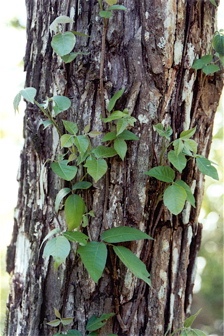Does global warming mean more poison ivy?
Researchers charting the growth of vines in two
forests in South Carolina found up to a 10-fold increase in the number of vines
in just two decades.

Researchers charting the growth of vines in two forests in South Carolina found up to a 10-fold increase in the number of vines in just two decades. Vines commonly found in both forests include grapevines, trumpet vine, poison ivy and Virginia creeper. Most of the vines use adhesive roots or tendrils to climb trees.
Although the specific reasons for this shift aren’t fully understood, Allen and his colleagues say possible mechanisms include increases in carbon dioxide concentrations, which have been shown to increase vine growth more than tree growth.
“Many vines thrive on elevated levels of carbon dioxide,” he said. “Several studies suggest that vines like poison ivy benefit more than other plants from higher CO2 levels.”
I know this study just thrills our readers who actually go outdoors.
Posted: Thu - July 19, 2007 at 11:44 AM